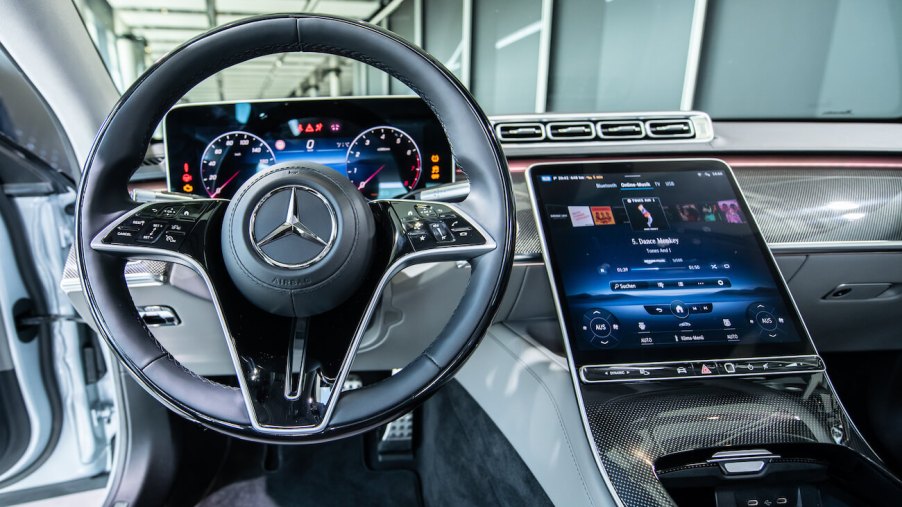
Mercedes-Benz Drive Pilot: The Luxury Car Maker’s Self-Driving Car System Explained
With AI growing in popularity, automakers are in yet another race to see who can create a true self-driving car first. While there are some vehicles on the road that can take over driving to some extent, the driver still has to have their eyes on the road and be prepared to take over. Mercedes-Benz has released the first SAE Level 31 conditionally automated driving vehicle to be approved in the U.S., and other automakers will doubtless be playing catch up.
What are self-driving cars?
When automakers label a car as self-driving, this doesn’t mean that you can take a nap or watch Netflix and chill. What it means is that the car is capable of doing some functions on its own. Since this can become confusing rather quickly, J.D. Power reports the Society of Automotive Engineers (SAE) has created a system so that owners can easily know where their vehicle falls in the self-driving categories.
There are currently six levels. The first is level zero, in which there are no driver assistance features. In levels one and two, there are some, but the driver remains in control and is responsible for what the technology does.
For level three, the vehicle has much more control and doesn’t need a human to operate it. The driver must remain aware and ready to take over if necessary.
The same applies to levels four and five, but with each increase in level, the vehicle is more capable of driving on its own. A human will always need to be seated behind the driver’s seat, however.
What is the Mercedes-Benz Drive Pilot?
The new Mercedes-Benz Drive Pilot is a level three autonomous driving vehicle. It’s not fully capable of self-driving, but it’s a huge step toward it.
There are some key factors to consider if you’re thinking about buying a Mercedes-Benz that offers Drive Pilot. First off, it can’t drive over 40 mph. It can also only drive on approved freeways.
The technology used on Drive Pilot to keep track of the road conditions gives a very accurate location. In fact, Mercedes-Benz says it’s within inches.
Drive Pilot also takes factors into consideration, such as if there is any scheduled road work ahead. No technology is infallible, however, which is why drivers need to be ready to take over in case there is a wreck or something that will require you to stop quickly.
Because this technology is still so new, Mercedes-Benz has taken several steps to make sure that it is as safe as possible. The German automaker did this by adding sensors such as LiDAR, which is a rear window camera and microphone that can recognize when emergency vehicles are approaching. There is also a wet road sensor which is located in the wheel well.
Which vehicles offer the Mercedes-Benz Drive Pilot?
As cool as this technology is, it’s going to be available on only a limited number of vehicles starting out. Drive Pilot will be available in late 2023 on some EQS sedans. In 2024, this number will expand to include some S-Class models.
Vehicles equipped with Drive Pilot will not be available for purchase in all 50 states. For the time being, California and Nevada are the only places dealers can sell them. It will cost an additional $2,500 to activate the Drive Pilot, and it will be subscription-based. Owners will be trained on how to use the Drive Pilot when they go to have it activated.
The world will doubtless be watching closely to see how the new Drive Pilot works. If it has problems like some Tesla vehicles, then it may temporarily set back other automakers from getting their Level 3 self-driving vehicles approved. If it works out well, then it’s only a matter of time before more automakers get approved to use it.


